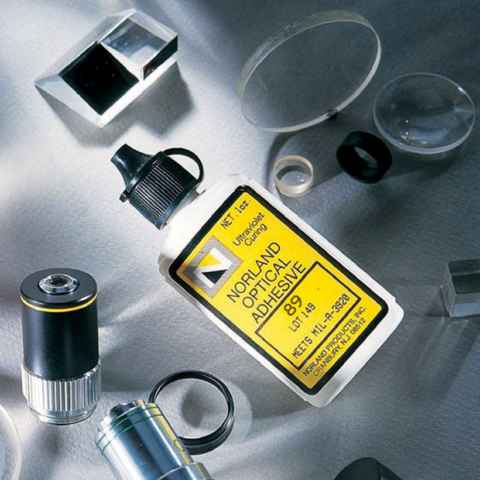Since, it is a one part system and 100% solid, it offers many advantages in bonding of optical materials where the bonding surface can be exposed to light. The use of NOA 65 eliminates premixing, drying, and heat curing operations common to other optical adhesive systems. Curing time is remarkably fast, and is dependent upon the thickness applied and the amount of ultraviolet light energy available.
The cured adhesive is very flexible and was designed to minimize strain. NOA 65 is especially suitable where the adhesive cross section would be relatively thick. NOA 65 has enough elasticity to keep strain to a minimum, even when dissimilar materials with different coefficients of expansion are bonded together.
Typical applications would be potting of lenses in metal mounts, bonding plastic to glass and cold blocking.
NOA 65 is cured by ultraviolet light with a maximum absorption within the range of 350-380 nanometers. The recommended energy required for full cure is 4.5 Joules/sq. cm of long wavelength UV light. The polymer has minimum oxygen inhibition, and therefore, any surfaces in contact with air will be non-tacky when fully cured.
For cleanup of the adhesive, acetone can be used if the cure has not progressed too far. If fully cured, methylene chloride can be used to soak assemblies apart.

Shelf life of the liquid is at least 6 months from the date of shipment if stored in a cool (5-22° C),
dark place in the original container. If refrigerated, allow the adhesive to come to room
temperature prior to use.
Care should be taken in handling this material. The Material Safety Data Sheet should be read for
this product as well as for any associated products such as alcohol, acetone or methylene chloride.
Prolonged contact with skin should be avoided and affected areas should be thoroughly washed
with copious amounts of soap and water. If the adhesive gets into the eyes, flush with water for 15
minutes and seek medical attention. Use the material in a well ventilated area, otherwise a NIOSH
approved organic vapor mask is recommended.


